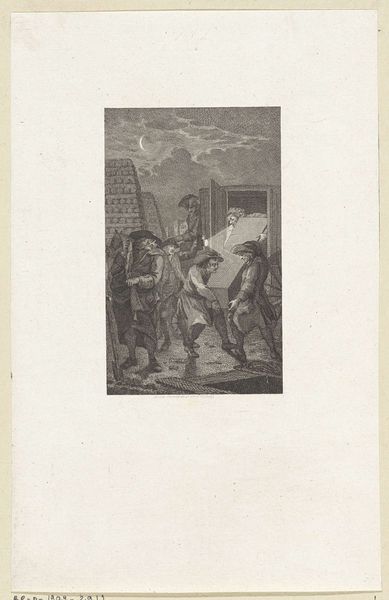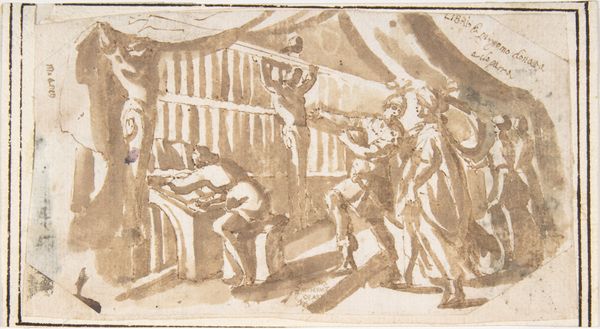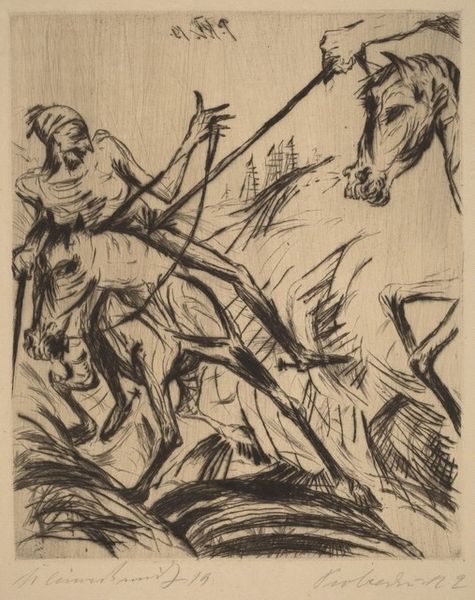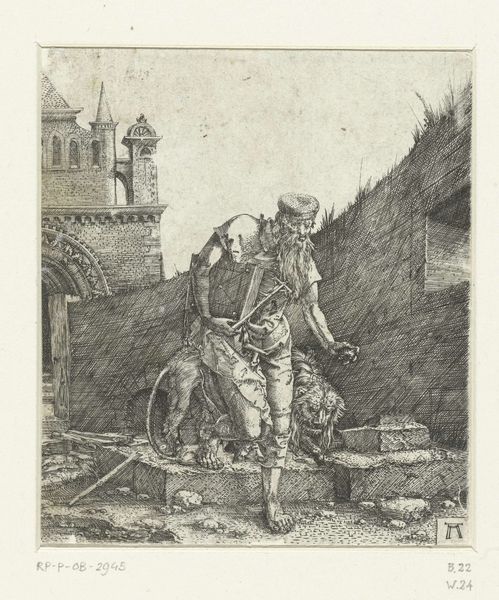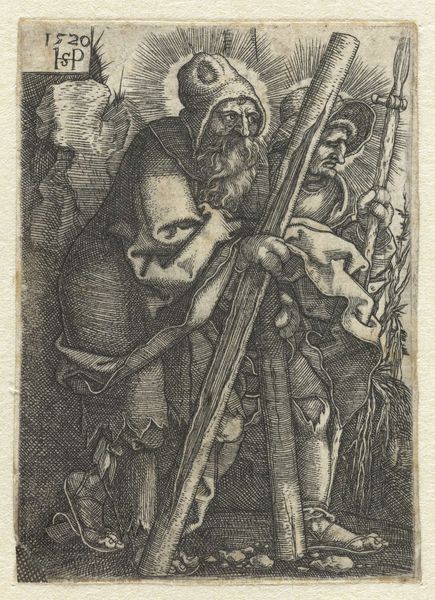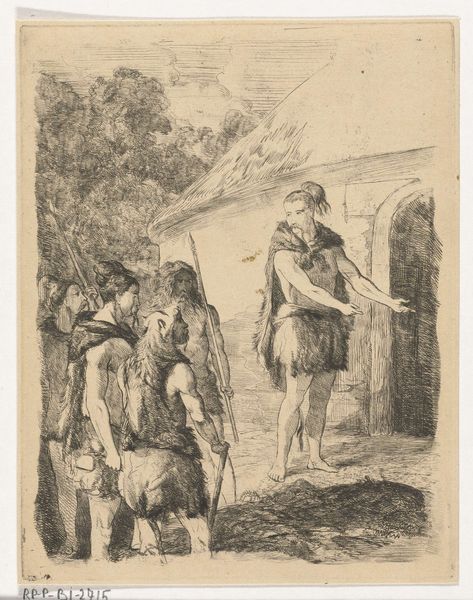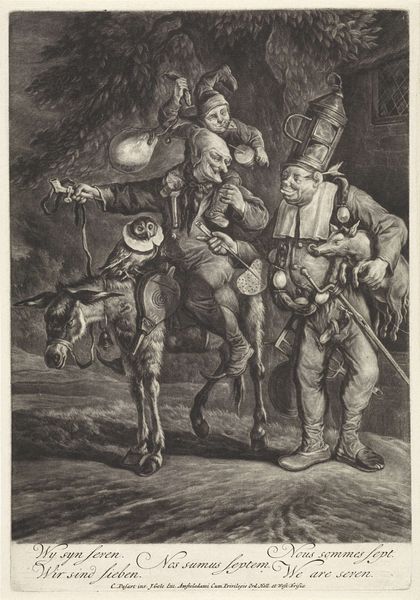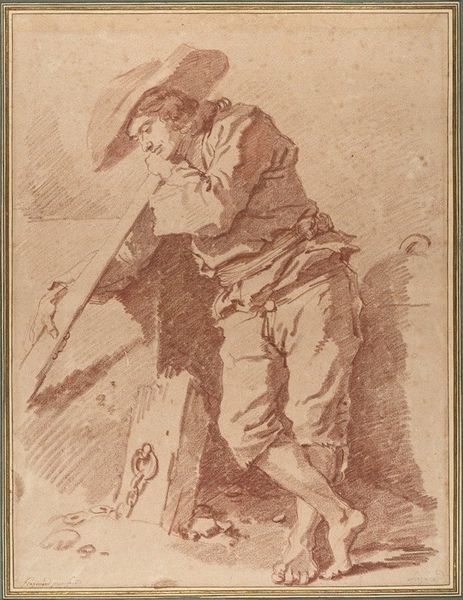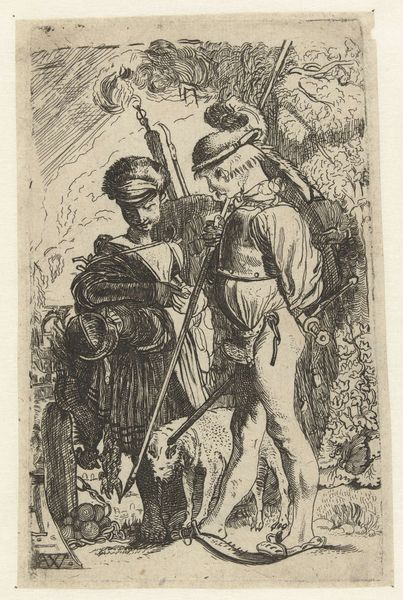
Two Donkeys and a Peasant in the Sun (Due somari e un contadino al sole) 1914
0:00
0:00
print, etching
# print
#
etching
#
landscape
#
figuration
#
italian-renaissance
#
realism
Dimensions: plate: 35.24 × 25.4 cm (13 7/8 × 10 in.) sheet: 49.21 × 37.47 cm (19 3/8 × 14 3/4 in.)
Copyright: National Gallery of Art: CC0 1.0
Curator: Welcome. This is "Two Donkeys and a Peasant in the Sun," an etching made around 1914 by the Italian artist Arturo Checchi. Editor: There's a heavy atmosphere here, wouldn't you say? The shading suggests stifling heat, a near-oppressive stillness. It is not as bright as the title claims! Curator: Right. Etching as a process, in this context, provides key insights. Checchi's choice speaks volumes. The acid-resist process necessitates labor. The very lines you see embody hours of toil, mimicking the labor of the peasant. Editor: You are on to something. I hadn't considered how the creation mirrors the content, that parallel of etching to toil. Speaking of lines, observe how the short, sharp lines build up the shadows, conveying a heavy texture almost as if you could touch the scene. And those elongated shadows cast by the donkeys definitely amplify the sense of a long day. Curator: Checchi presents labor, the donkey and peasant’s experience of it in a society in flux and hints to the shifting values associated with pre-war Italy, wouldn't you say? Look at how the peasant is collapsed on the floor… utterly beat! It mirrors the material conditions of the working class. Editor: Symbolically, that prone figure surely anchors the scene, both physically and metaphorically. The artist places him lower than the animals. Note how Checchi carefully rendered the folds of the peasant's clothes—deliberately chosen angles, adding depth, contrasting with the rigid lines. I find Checchi’s mastery of perspective drawing you into this sun-drenched landscape rather evocative! Curator: Of course, the artist could not complete his artwork alone. Someone acquired the acid and metal for the etching process, which hints at the commodification and production that made artwork available during his life, not to mention now. Who, then, owned the artwork after production and who has access to the image to begin with? Editor: An insightful note to end on! Considering the intrinsic and extrinsic elements together opens the path to a fuller art appreciation. Curator: Precisely, understanding art comes with an understanding of the labor.
Comments
No comments
Be the first to comment and join the conversation on the ultimate creative platform.


